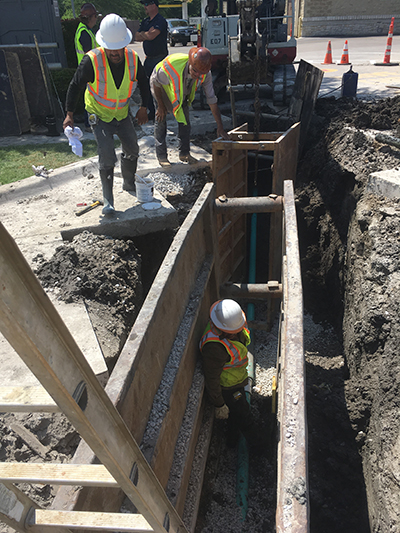Dr. Juneseok Lee, formerly an Associate Professor of Civil and Environmental Engineering at San Jose State University, researched water service line failure, finding a significant portion of housing stock is poised for service line failure.
In the study, published in the Journal of the American Water Works Association, Lee used nearly ten years of national historical water service line failure data from HomeServe, a home repair solutions provider.
Service Line Failures Can Cause Economic Shock
 With galvanized and copper demonstrating peak service line failure rates at between 50 and 60 years of age, the service line failure rates for older homes are peaking between 2005 and 2025. Newer homes are not expected to fare much better, with peak failure rates occurring between 2015 and 2035.
With galvanized and copper demonstrating peak service line failure rates at between 50 and 60 years of age, the service line failure rates for older homes are peaking between 2005 and 2025. Newer homes are not expected to fare much better, with peak failure rates occurring between 2015 and 2035.
This means homeowners in your city may be at risk for economic shock, or a large, unexpected expense due to a service line failure. The impact of a costly home repair can be devastating, because many homeowners aren’t prepared, although approximately 60 percent of American households endured an economic shock in one year, according to The Pew Trusts.
The HomeServe State of the Home Fall 2019 survey shows more than half of Americans had an emergency home repair in the prior year, while one in five has nothing saved for an emergency. Meanwhile, the cost of replacing a water service line ranges between $1,500 and $5,000, and replacing a sewer service line costs between $3,000 to $12,000.
Service Lines Can Cause Other Issues
The study also found water quality problems related to service lines, and the quality of drinking water in private service lines can differ considerably, some with higher bacteria counts. In addition, Lee’s research found lead service lines account for 50 to 75 percent of lead found in samples taken at the tap.
The research showed service lines are the weakest points in the water distribution system, with large amounts of real water loss occurring in service lines, fittings and connections between the curb stop and meter. In addition, a service line failure can go undetected for a long period of time, letting water – and money – leak away.
Learn more about Dr. Lee’s findings and how your city can address service line failures by downloading our eBook.

